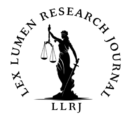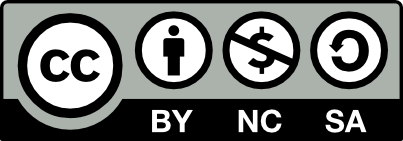Written by Harsh Deep Garg,
December 2024
Social media double-edged sword: freedom and fallout
In recent times, social media has emerged as a powerful force in the age, influencing public opinion and allowing people to express themselves in ways that were before unthinkable. a new kind of communication has emerged as a result of social media sites like Facebook, Instagram, and Twitter, where thoughts can be instantly shared across national boundaries and voices are magnified[i]. But there is a big catch to this freedom of expression which is protected by article 19(1)(A)[ii] of the Indian constitution. despite being essential, the right to free expression is not unqualified. The quick dissemination of false information on social media has brought up significant legal issues on how to strike a balance between the right to free speech and the preservation of one’s reputation.
Once restricted to traditional media, defamation today presents a special problem in the internet sphere, where damaging or inaccurate claims can swiftly reach millions of people. the legal framework for dealing with defamation in India is provided by sections 499[iii] and 500[iv] of the Indian Penal Code (IPC) and the significance of free speech in the online sphere was reaffirmed by the historic ruling in Shreya Singhal vs Union of India (2015)[v], which invalidated section 66A of the information technology act. the conflict between Article 19(1)(a) and the requirement to protect reputations will be examined in this blog as it examines the changing legal environment around defamation on social media.
When words become arrows: defamation in the digital age
In the digital era, distributing untrue material that damages someone’s reputation- especially on social media platforms referred to as defamation. Because information spreads so quickly on social media sites like Facebook, Instagram, and Twitter, a single slanderous post can go viral very quickly and seriously harm a person’s reputation. Section 499 of the Indian Penal Code IPC defines defamation in India as the act of damaging someone’s reputation by making false comments, either orally or in writing. If found guilty of defamation under the IPC, a person may fined, imprisoned for up to two years, or both.
For example, if a lady is falsely accused of a crime she did not commit on social media, which is an example of defamation in the digital era. She suffered severe anxiety and damage to her reputation as a result of swiftly spreading slanderous posts. Citing section 499 IPC, she filed a defamation action. and the court will decide in her favor, emphasizing how crucial it is to shield people from harm brought on by hostile and misleading internet speech.
Section 66a of the IT Act 2000[vi], which made offensive internet information illegal, was overturned by the Supreme Court in the 2015 case of Shreya Singhal vs Union of India. The decision underlined that speech should not damage someone else reputation while simultaneously reinforcing the significance of preserving free expression online. In the digital age, it is still difficult to strike a balance between the right to free speech and the preselection of one’s reputation.
Defenders of honor: an explanation of civil and criminal defamation
Defamation laws in India are intended to shield a person’s reputation from untrue assertions that can undermine their social status and sense of dignity. Civil and criminal defamation are the two primary remedies provided by these statutes[vii]. whereas criminal defamation entails criminal action, such as jail time or a fine, civil defamation enables the victim to seek financial restitution for the harm caused by defamatory remarks.
Section 500 of the Indian Penal Code IPC describes the penalties for criminal defamation which can include a fine or up to two years in jail. Section 499 of the IPC defines defamation and makes it a chargeable offense. . in Subramaniam Swamy vs Union of India 2016, one of the seminal cases in this area, the Supreme Court affirmed the constitutionality of criminal defamation and emphasized that the right to defend one’s reputation is a fundamental component of one’s personal dignity and is protected by article 21[viii] of the Indian constitution
If there has been civil defamation the victim may sue for damages for reputation harm. Madhuri Sharma v. Rajeev Sharma 2015[ix] is a noteworthy case in which a lady received compensation following online defamatory remarks made about her.
Defamation cases have become more complex in the digital age. An influencer who disseminated inaccurate information about a famous chef was sued for defamation in 2020. Similar to this, courts have mandated that social media companies disclose the identity of anonymous defamers in cases involving online anonymity. These instances demonstrate how defamation rules are constantly changing to safeguard reputations in both conventional and online settings.
The Digital Maze: Challenges in Addressing Online Defamation
The advent of social media has given a voice to the people, but this has also brought forth serious challenges to defamation laws in the era of digital communication. While online defamation is much quicker and harder to control than traditional defamation, it causes irreparable harm to the reputation of an individual. Among the most challenging problems is the anonymity provided by the internet. Since people hide behind pseudonyms or false accounts, it is quite difficult to identify and prosecute defamers. This has become a new frontier in the law of defamation because it has been very challenging to seek justice for victims of online attacks.
The second jurisdictional challenge is the fact that the internet is global in nature. Content posted in one country may have worldwide implications, which in most cases does not involve the laws of that country. In this respect, legal recourse for victims of defamation becomes complicated since countries differ with regard to defamation laws and mechanisms for enforcement. This issue was considerably addressed in the Shreya Singhal v. Union of India (2015) case, which involved the ambit of free speech and the extent to which online content could be curtailed. Even as Section 66A of the Information Technology Act has been struck down for acting as a curb on free speech, the case points out an important balance between reputational protection and free expression. There is, thus, an imperative need for a legal architecture that would balance the complexities of online defamation with the imperatives of personal dignity and free speech.
Fighting Back: Remedies Against Digital Defamation
Defamation, when it strikes online, spreads like wildfire and ravages reputation on a vast scale. But the victim of an online defamation is not without his or her recourse. The law offers several avenues for recourse in civil as well as criminal forums to fight against defamation.The main civil remedy under this scenario is a defamation suit that can be initiated under Section 499 of the IPC, wherein monetary compensation may be claimed on account of damage caused by the defamatory statements. The victim can file for damages on account of reputational harm, emotional distress, or monetary loss on account of the defamatory content. For example, the Delhi High Court has issued compensation awards in cases of reputations being maligned for false content on the internet.
Section 500 of the IPC also provides for criminal defamation. The punishment under criminal defamation can be imprisonment or fine upon conviction. Criminal defamation usually deters those who intend to harm others through malice and wish to engage in defamation.Victims can also bring an injunction, or a court order, to remove defamatory material from the internet. The remedy stops any further harm and ensures that offending material is deleted. It has become clear in several cases that even giants like Google and Twitter have been directed to remove defamatory material from the internet. Cyber cells are increasingly assuming the task of investigating and bringing such defamers before the law.
Toward a Safer Digital World: The Road Ahead
The way forward in the fight against online defamation is through a balanced approach that strikes a chord with freedom of expression and protects personal dignity. Legal reforms must focus on regulating social media so that these platforms are made accountable for the harm that they create. Stronger laws to make platforms act faster and more transparently in taking down defamation content will go a long way in curbing the spread of harm online.Improving digital literacy will help users make informed judgments in distinguishing between truth and false information. The legal systems must be made more effective to counter the special digital defamation problems that are presented. Special cyber laws may have to be introduced in this regard. In general, collaboration among lawmakers, technology firms, and law enforcement is necessary to develop a freer yet safer digital domain where both free speech and reputation are safeguarded.
REFERENCES:
[i] IIPRD, Defamation in the Digital Age: Navigating Social Media, Blogs, and Legal Consequences, IIPRD (Oct. 15, 2021), https://www.iiprd.com/defamation-in-the-digital-age-navigating-social-media-blogs-and-legal-consequences/#:~:text=Social%20Media%20Defamation%3A%20The%20Power%20of%20Instant%20Sharing&text=Individuals%20can%20share%20content%2C%20opinions,both%20positive%20and%20negative%20influence.
[ii] Indian Constitution art. 19, cl. 1(a) (“All citizens shall have the right to freedom of speech and expression”).
[iii] Indian Penal Code § 499 (1860) (“Whoever, by words, either spoken or written, or by signs or by visible representations, makes or publishes any imputation concerning any person, intending to harm, or knowing or having reason to believe that such imputation will harm, the reputation of such person, is said to defame that person.”).
[iv] Indian Penal Code § 500 (1860) (“Whoever defames another shall be punished with simple imprisonment for a term which may extend to two years, or with fine, or with both.”).
[v] Shreya Singhal v. Union of India, AIR 2015 SC 1523.
[vi] Information Technology Act, 2000, § 66A, No. 21 of 2000, Acts of Parliament, 2000 (India).
Note: Section 66A was struck down by the Supreme Court of India in Shreya Singhal v. Union of India, (2015) 5 SCC 1, AIR 2015 SC 1523.
[vii] LawBhoomi, Difference Between Civil and Criminal Defamation, LAWBOOMI, https://lawbhoomi.com/difference-between-civil-and-criminal-defamation/#:~:text=Civil%20defamation%20aims%20to%20balance,from%20engaging%20in%20defamatory%20acts. (last visited Dec. 12, 2024).
[viii] Constitution of India art. 21.
[ix] Madhuri Sharma v. Rajeev Sharma, (2015) 3 SCC 301.


